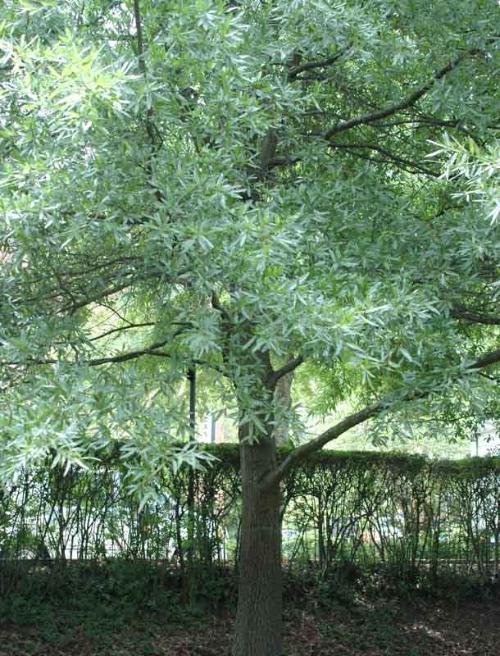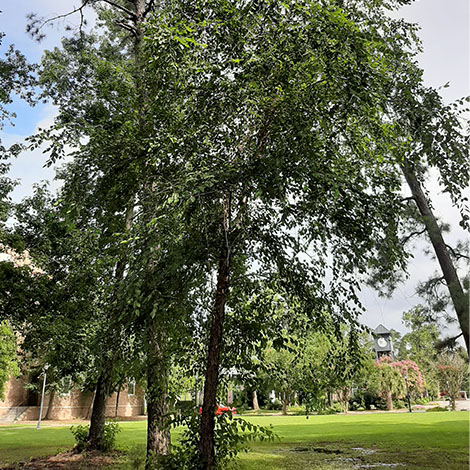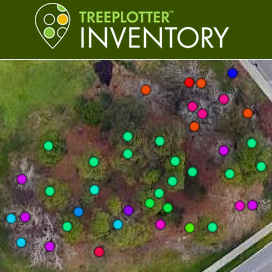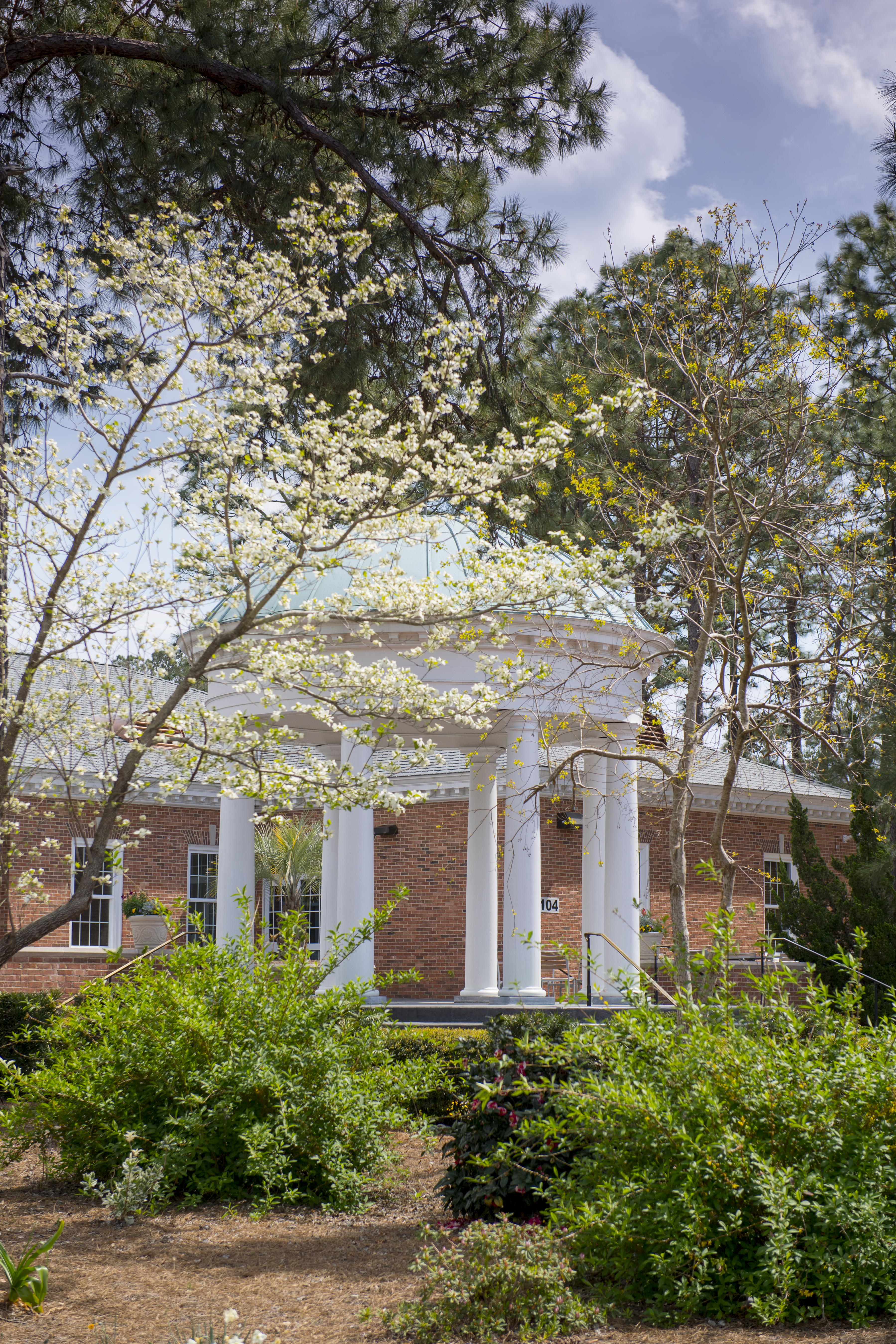CCU Arboretum
Laurel Oak

Common Name: Laurel Oak
Scientific Name: Quercus hemisphaerica
Species Range: Laurel Oak is native to eastern Texas and the Coastal and Atlantic Plains of southeastern United States. It is most grown in sandhills and dry hammocks from Virginia to Florida and east of Texas. It can be found in USDA hardiness zones 6B through 10A.
Growth Characteristics: This fast-growing oak tree typically reaches 70’- 90’ in height with a 35’- 45’ spread. It has a life span of approximately 50 years. Laurel Oak thrives in either full sun or partial shade. It grows in upland, sandhill, and dune areas with dry, well-drained, and sandy soils; it is also tolerant of wet and periodically flooded conditions. Research suggests that trees growing in drier conditions will grow slower and have stronger wood than ones that grow in wetter areas. It has a dense, oval, symmetrical crown and a rounded canopy. The trunk can be up to four feet in diameter with a wider spread at the base. If growing in the northern parts of its range it will be deciduous, however if it is growing in the southern parts it will be semi-evergreen. Its ovoid shaped leaves are simple and alternate with either acute or blunt tips. Their length ranges from 1”-5” and width 1”-2”. The bases vary from pointed to rounded, and edges can sometimes be rolled. They are typically dark green, mildly glossy, smooth, and lighter underneath. The foliage is thicker during warmer months and thins out in the fall as it turns to different shades of yellow. It produces very small, reddish-brown acorns biennially. Gold to green blooms appear in early spring. The male flowers are 1” - 3” long yellow-green catkins; the females range from green to red shades and appear with the leaves. The slender twigs vary from brown to gray. The dark gray bark is smooth during its initial years and becomes furrowed as it ages.
Ecosystem Service Value: This tree attracts pollinators, small mammals, songbirds, and a variety of Lepidopteran. The acorns are a great food source for neighboring wildlife. Its fruit and leaves produce a lot of litter. Caterpillars, particularly Tent caterpillars, also feed on Laurel Oak foliage.
Uses, Other Details: Laurel Oak is often planted as a year-round shade tree and plays an important role in naturalized areas. It has been used as a street tree in the deep south and in residential landscapes. The high tannin content in the leaves and acorns often results in stained concrete. The wood has been used for hardwood pulp and fuelwood. Both the fruit and leaves of the Laurel Oak are poisonous to humans and yield large amounts of pollen making it highly allergenic. New techniques for vegetative propagation of the Laurel Oak are being implemented but propagating by seed is currently the main method. Pruning is recommended for proper growth as well as rot prevention. It is recommended to keep it with one central trunk and branch diameter less than half of the trunk. It is also suggested that vital branches be positioned 2’-3’ apart.
Threats: The Laurel Oak rots with maturity. As it reaches 30-40 years of age, most of these oaks begin to decay from heart rot. It is quite difficult to determine whether it is rotting until major damage occurs. The trunks and main branches are particularly susceptible to decay, wood rot, and canker diseases. There are several pests that can affect the Laurel Oak but they are overall harmless and non-life-threatening to the tree. Various mites typically cause dusty, and yellowing leaves. Both Gall wasp and various fungi may cause leaf damage and spots. A lace bug infestation results in dusty, white to gray leaves, and leaf miners may result in brown leaves.
Aphids can affect the Laurel Oak by disrupting its growth and leave a coating of honeydew on leaves closer to the ground. It is common for predatory insects inhabiting larger trees to control the aphid infestation. Gypsy moth caterpillar nesting on the Laurel Oak can be highly destructive. While not as common, fall cankerworm may persist. Varieties of scale can pose a threat however horticultural oil is a suggested method to control them. Twig pruner beetles can damage the twigs during summer months, but they drop with the twigs. Leaf blister and root rot may occur during an especially wet year and will result in varying shades of yellow areas on the leaf; infected spots are the same shape and size throughout. Powdery mildew also can damage to the leaves. High pH soil can also lead to chlorosis in the leaves.
Identification Tips and Tricks: Both this tree, Quercus hemisphaerica, and Quercus laurifolia go by Laurel Oak. Quercus hemisphaerica also goes by Darlington oak or diamond-leaf oak because of the shape of its leaves. Another way to identity this species is to consider the location; this species is typically found in wet locations.
Species profile by Audrey Nelson
References:
Edward F. Gilman, D. (2019, April 12). Quercus Laurifolia: LAUREL OAK. Retrieved March 14, 2021, from https://edis.ifas.ufl.edu/st549
Darlington Oak. (2010). University of Florida IFAS Extension. Web. 19 Sept. 2012. Retrieved from: http://edis.ifas.ufl.edu/fr301
Kirkman, L. Katherine., et al. Native Trees of the Southeast: An Identification Guide. Timber Press, 2007.
Laurel Oak. (n.d.). Retrieved March 14, 2021, from https://gyr.fortlauderdale.gov/greener-government/natural-resources-preservation/growing-our-green-canopy/gyr-tree-directory/laurel-oak
“Quercus Hemisphaerica.” Quercus Hemisphaerica (Darlington Oak, Laurel Oak, Oaks, Sand Laurel Oak, Upland Laurel Oak) | North Carolina Extension Gardener Plant Toolbox, plants.ces.ncsu.edu/plants/quercus-hemisphaerica/.
Russ, A., & Russ, K. (2004, November 05). Plants for damp or wet areas. Retrieved March 14, 2021, from https://hgic.clemson.edu/factsheet/plants-for-damp-or-wet-areas/








